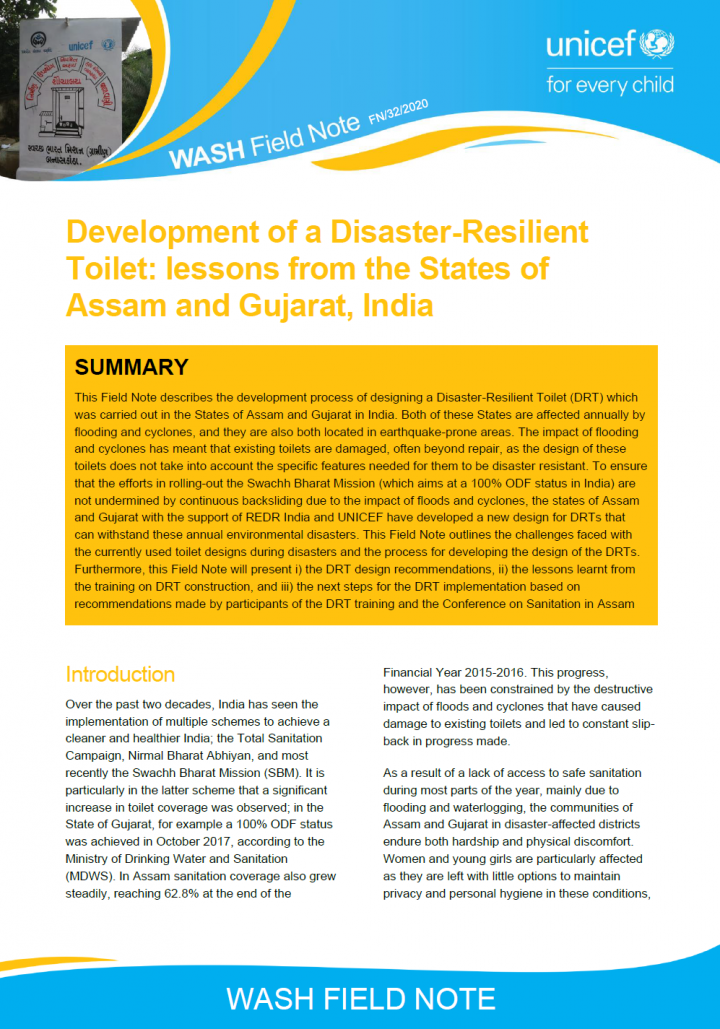Development of a Disaster-Resilient Toilet - Lessons from the States of Assam and Gujarat, India
Dave, S., Deshmukh, T., Deb, B., Manchikanti, S., Patnaik, S. (2020)

Published in: 2020
Pages: 10
Publisher:
United Nations Children’s Fund, New York, USA
Author:
Dave, S., Deshmukh, T., Deb, B., Manchikanti, S., Patnaik, S.
Uploaded by:
SuSanA Admin
Partner profile:
common upload
1250 Views
86 Downloads
This Field Note describes the development process of designing a Disaster-Resilient Toilet (DRT) which was carried out in the States of Assam and Gujarat in India. Both of these States are affected annually by flooding and cyclones, and they are also both located in earthquake-prone areas. The impact of flooding and cyclones has meant that existing toilets are damaged, often beyond repair, as the design of these toilets does not take into account the specific features needed for them to be disaster resistant. To ensure that the efforts in rolling-out the Swachh Bharat Mission (which aims at a 100% ODF status in India) are not undermined by continuous backsliding due to the impact of floods and cyclones, the states of Assam and Gujarat with the support of REDR India and UNICEF have developed a new design for DRTs that can withstand these annual environmental disasters. This Field Note outlines the challenges faced with the currently used toilet designs during disasters and the process for developing the design of the DRTs. Furthermore, this Field Note will present i) the DRT design recommendations, ii) the lessons learnt from the training on DRT construction, and iii) the next steps for the DRT implementation based on recommendations made by participants of the DRT training and the Conference on Sanitation in Assam.
Bibliographic information
Dave, S., Deshmukh, T., Deb, B., Manchikanti, S., Patnaik, S. (2020). Development of a Disaster-Resilient Toilet - Lessons from the States of Assam and Gujarat, India. United Nations Children’s Fund, New York, USA
Filter tags
East Asia & Pacific English Politicians and local decision makers Practitioners















